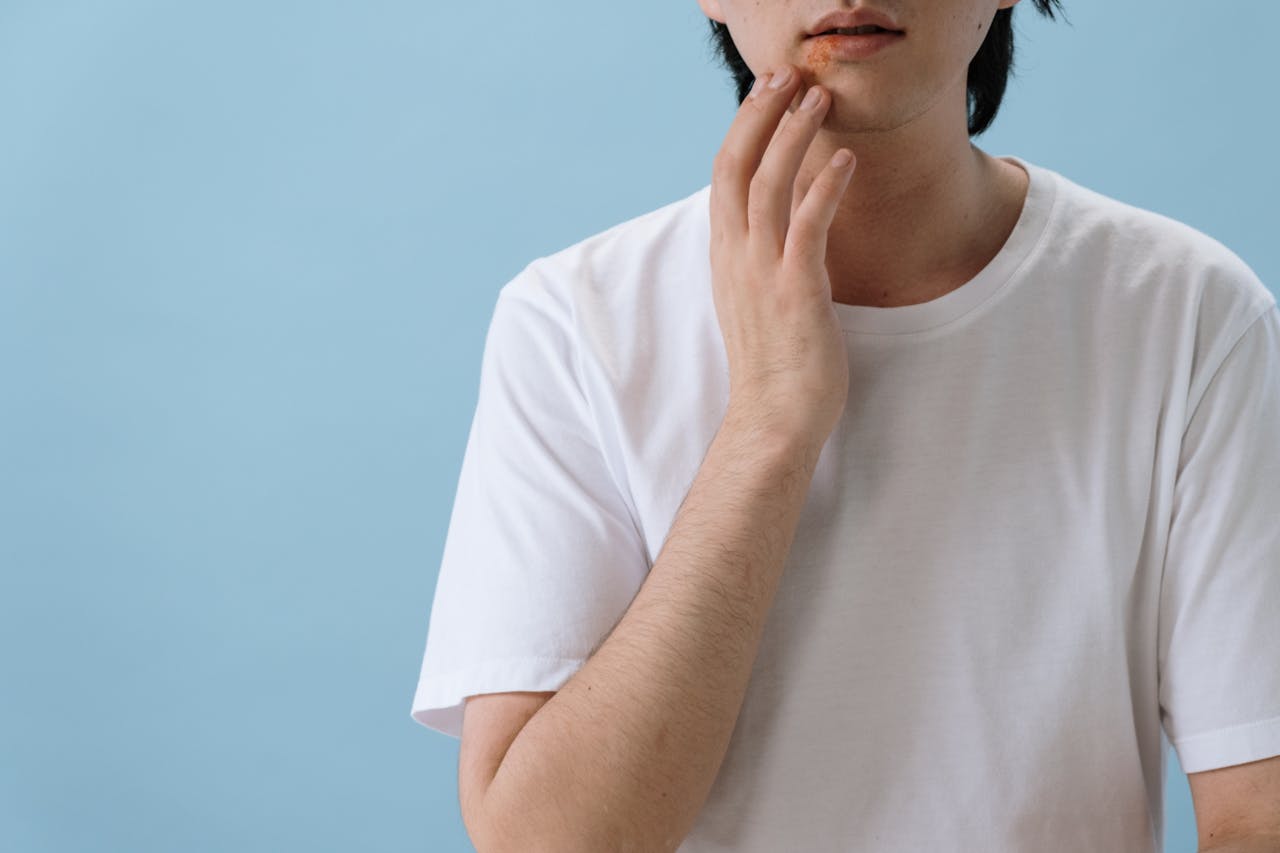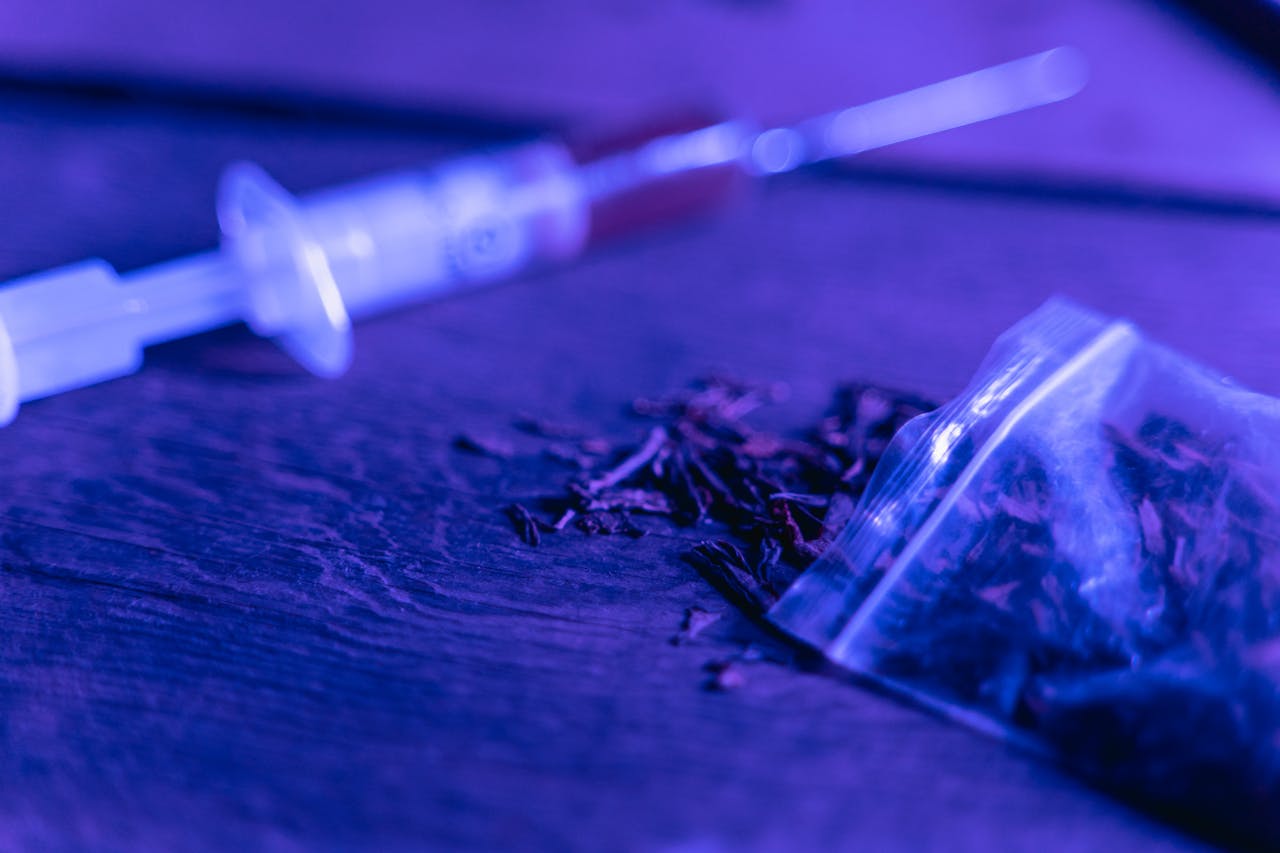Drugs and Skin Sores: Signs, Causes, and When to Seek Help

Drugs and skin sores are a visible, painful, and often misunderstood consequence of substance abuse. While the internal damage from drugs is widely discussed, impacting the brain, heart, and liver, the skin often reveals early, urgent signs of danger.
From persistent rashes to painful ulcers, the skin reflects what’s happening beneath the surface. These symptoms don’t just affect appearance—they often signal serious infections, weakened immunity, and long-term health risks. Left untreated, these sores can lead to permanent scarring, systemic infections, and even death.
This article explores how drug use and skin sores are linked, what types of sores commonly appear, the underlying causes, and when professional help is critical. Understanding these connections can empower individuals to seek early treatment for drugs and skin problems and begin the road to recovery.

How Drug Use Leads to Skin Sores and Other Skin Problems
Certain substances have a well-documented impact on skin health. One common question people ask is, What drugs affect your skin? Methamphetamine, heroin, crack cocaine, and fentanyl are among the worst offenders. These drugs damage blood vessels, impair immune responses, and reduce personal hygiene, creating the perfect storm for skin problems.
Direct Effects of Drugs on the Skin
- Methamphetamine causes hallucinations that lead users to scratch or pick at their skin, creating open wounds that can become infected. The infamous “meth face” is often marked by sores, scabs, and deep acne-like lesions.
- Heroin users may experience skin infections from repeated injections, especially when using non-sterile needles or injecting into unhealthy tissue.
- Cocaine constricts blood vessels, limiting oxygen and nutrient delivery to skin cells. This can lead to ulcers, necrosis, and an increased risk of bacterial infections.
- Opioids suppress the immune system and slow healing, allowing minor irritations to develop into large, painful sores.
If you’re unsure whether your insurance covers rehab, Aetna insurance coverage for rehab can help verify your benefits for detox and treatment services.

Types of Skin Sores and Problems Linked to Drug Use
Recognising the different types of skin sores from drug use can help identify problems early and take appropriate action. These symptoms may start small but can progress rapidly without proper care.
- Abscesses and Cellulitis – Abscesses form when bacteria invade the skin, causing pus to accumulate beneath the surface. These painful lumps are often warm to the touch and surrounded by red, swollen tissue. Cellulitis is a related skin infection that spreads rapidly and may be accompanied by fever or chills. Both conditions require antibiotics and, in some cases, drainage by a healthcare provider.
- Open Wounds and Ulcers – Persistent drug use, especially injection drug use, can cause ulcers that resist healing. These wounds may ooze fluid, emit a foul odor, and become breeding grounds for dangerous bacteria such as MRSA. In severe cases, ulcers can spread to deeper tissues, necessitating hospitalization.
- Meth Mites and Skin Picking – Methamphetamine users often experience the sensation of bugs crawling under their skin, a condition known as formication. This leads to compulsive scratching, digging, or picking at the skin, resulting in scabs and scars. This behaviour is a form of excoriation disorder and is influenced by both psychological and chemical factors. A meth rehab Los Angeles patients undergo should provide targeted support for healing both the physical wounds and the underlying mental health challenges.
- Allergic Reactions and Drug Rashes – Impurities in street drugs or misuse of prescription medications can trigger allergic skin reactions. What does a drug rash look like? It may present as hives, red patches, blisters, or peeling skin. Severe reactions such as Stevens-Johnson Syndrome require immediate emergency care due to their life-threatening nature.
Root Causes Behind Drugs and Skin Sores
The connection between drugs and skin sores isn’t just about the substance itself. Environmental and lifestyle factors, many of which accompany addiction, worsen the condition of the skin.
- Needle Contamination and Poor Hygiene – Using dirty, reused, or shared needles is a direct route for bacteria and viruses to enter the body. Even injecting into the same site multiple times can cause vein damage, infections, and abscesses. Many users live in environments where clean water, soap, and first aid supplies are not readily available. This lack of hygiene turns minor irritations into serious skin conditions.
- Toxic Additives in Street Drugs – Street drugs often contain dangerous fillers and contaminants. Talcum powder, baking soda, crushed pills, and even glass or bleach have been found in samples of heroin and meth. These substances can cause chemical burns to the skin, trigger allergic reactions, or block circulation in veins, leading to ulcers and infections.
- Malnutrition and Dehydration – Addiction often comes with poor nutrition. Lack of vitamins A, C, and E, as well as zinc, hampers the body’s ability to regenerate skin cells. Without enough protein, the skin becomes thin and fragile. Dehydration further dries out the skin, making it prone to cracking and tearing. For individuals experiencing both physical and emotional damage, our Tranquility Recovery Center offers whole-person care, including medical, nutritional, and therapeutic support.

The Psychological Impact of Drug-Related Skin Problems
In addition to physical pain, skin sores and drug use often lead to deep emotional wounds. People with visible skin damage may suffer from:
- Low self-worth, especially in social settings.
- Anxiety about being judged or stared at.
- Depression, isolation, or worsening substance use to cope.
- Body dysmorphia, due to scarring or facial disfigurement.
This emotional toll can be overwhelming, often discouraging individuals from seeking help. But mental health support is a critical part of recovery. According to the National Alliance on Mental Illness (NAMI), co-occurring mental health and substance use disorders are common, and integrated treatment greatly improves outcomes.
Warning Signs That Require Immediate Help
Ignoring skin sores can have devastating consequences. When left untreated, wounds can become infected, spread rapidly, or even turn into life-threatening conditions like sepsis or necrotizing fasciitis.
Red Flags to Watch For
- Increasing pain, redness, or swelling.
- Pus or fluid draining from the wound.
- Warmth around the sore.
- High fever or chills.
- Lethargy or confusion.
One of the most frequently asked questions is, What is the cause of random skin sores? If sores are appearing without a clear cause, or if they persist despite at-home care, it’s likely a deeper issue such as drug use, poor circulation, or immune suppression.
If these symptoms sound familiar, don’t wait. A facility like Los Angeles heroin detox can provide urgent care while helping you break the cycle of addiction.
How to Treat Drug-Related Skin Sores and Begin Recovery
Treatment for drugs and skin sores must address both the symptom and the source. Temporary bandages won’t be enough. Sustained healing requires medical care, addiction treatment, and behavioural therapy.
Wound Management and Medical Care
Initial treatment often involves cleaning the wounds, applying antibiotics, and draining abscesses. Some cases may require IV antibiotics or even surgery. Healing is much slower in individuals with compromised immune systems or poor nutrition.
When entering the inpatient detox San Fernando Valley experts recommend in these situations, individuals often receive daily wound care from medical staff alongside withdrawal management. This ensures the person is treated holistically—body and mind.
Addiction Treatment Programs
The only way to stop the cycle of skin sores is to stop the drug use that causes them. Inpatient programs like our relapse prevention program California offer structured care to help individuals understand their triggers and develop long-term coping strategies.
Outpatient therapy, 12-step groups, and harm reduction education are also crucial components of a comprehensive recovery plan. For opioid-related cases, opioid addiction treatment in Los Angeles, CA includes both medical detox and medication-assisted treatment (MAT) to reduce withdrawal symptoms and cravings.
Building a Future Beyond Skin Sores and Drug Use
Recovery is not just about eliminating substances—it’s about rebuilding your health, your self-image, and your future. Skin sores may heal with time, but they often leave emotional scars that require just as much care and attention. The physical marks on your skin can serve as reminders of the challenges you’ve faced, but they don’t define who you are or your growth potential. Embracing recovery means learning to love and care for yourself again, both inside and out.

A Message of Hope
It’s easy to feel overwhelmed or hopeless when your body shows visible signs of addiction. However, the skin, much like the human spirit, has an incredible ability to regenerate and heal when provided with the right conditions. With consistent medical treatment, emotional support, and a strong commitment to change, even the most damaged skin can recover, and your life can transform in profound ways. Healing is a journey, and every step forward is a victory worth celebrating.
There’s no shame in seeking help. True strength lies in admitting there’s a problem and taking action to address it. If you or someone you love is struggling with drugs and skin sores, know that support is available, and recovery is within reach. Reaching out for professional care not only helps treat the visible symptoms but also addresses the underlying addiction, paving the way for a healthier, more fulfilling life.
Learn More and Take the First Step
Substance use can leave lasting effects on both the skin and the soul, but the earlier you seek treatment, the better your chances for full recovery. Don’t wait for the problem to worsen. To learn more about how drugs impact your skin and overall health, consider visiting our addiction treatment center San Fernando Valley patients talk about in superlatives. Taking that first step towards healing is an act of courage, and it can change your life forever.
You Have Questions
We Have Answers
At Tranquility Recovery Center, we offer treatment for a wide range of addictions, including alcohol, opioids, prescription drugs, and illicit substances. Our team tailors each program to meet individual needs, focusing on both the physical and emotional aspects of recovery.
At Tranquility Recovery Center, we offer treatment for a wide range of addictions, including alcohol, opioids, prescription drugs, and illicit substances. Our team tailors each program to meet individual needs, focusing on both the physical and emotional aspects of recovery.
At Tranquility Recovery Center, we offer treatment for a wide range of addictions, including alcohol, opioids, prescription drugs, and illicit substances. Our team tailors each program to meet individual needs, focusing on both the physical and emotional aspects of recovery.